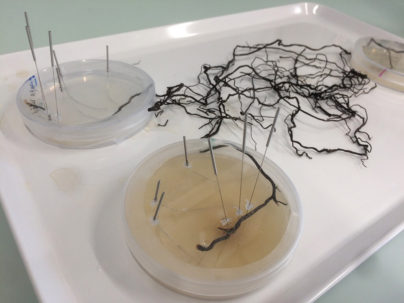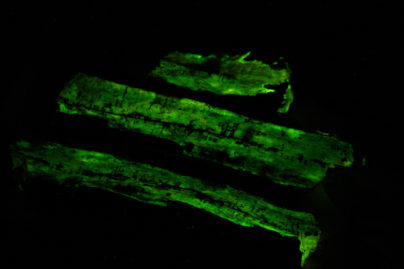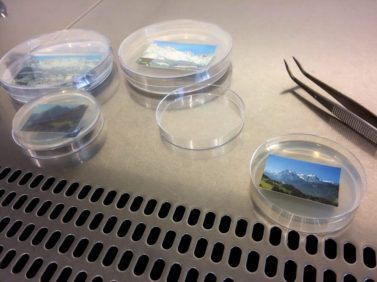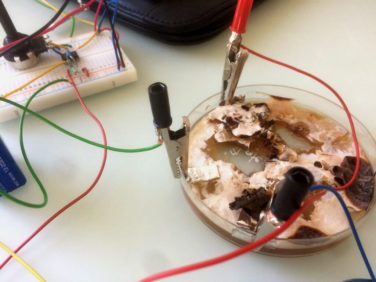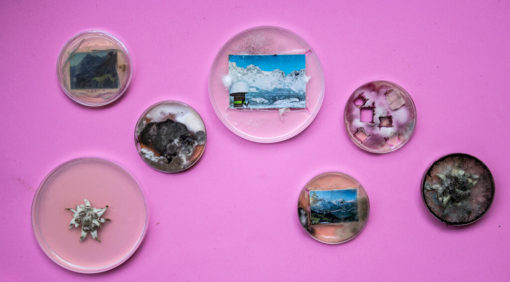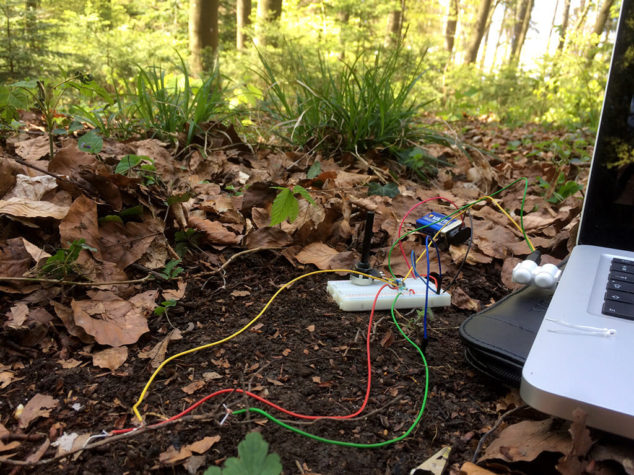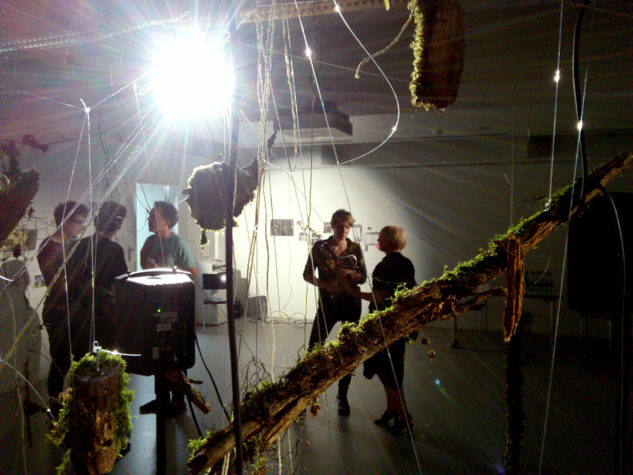Investigating invasive alien plants and fungi as markers of globalisation and colonialism, Miranda Moss has been paying particular attention to the exchanges of neophytes between Europe and South Africa during her artists-in-labs residency at the Swiss Federal Institute for Forest, Snow and Landscape Research WSL this spring. In WSL’s phytopathology lab the artist has been focussing on pathogenic fungi and microbes which are seemingly invisible but hugely efficient at spreading and can have devastating effects on the environment.
Moss has delved into the historical narratives surrounding these organisms and considers the extent to which they are able to convey pressing socio-political issues of the present.
The artist has been especially interested in working with armillaria spp. or the honey fungus, which is native to Switzerland but has become a problem as trees face more stress due to climate change. On the other hand in South Africa, a European strain of armillaria has been discovered in the historic Company’s Garden in Cape Town. This organism, which has grown to the size of the entire garden, and has very recently been found spreading to the fragile ecosystem that exists on the Cape Peninsula, is believed to have colonised Cape Town along with the first European settlers — even being referred to as «Van Riebeeck’s Curse».
The 2017 artists-in-labs residency of Miranda Moss at the WSL is a collaboration project between the artists-in-labs program and Pro Helvetia.
Below is a recording of the four-channel sound installation which translated the DNA of a specimen of armillaria, or the Honey Fungus, into music. This was a collaborative project between myself, PHD student Renate Heinzelmann whose data I used, and two classically-trained musicians – Galina Juritz (violin) and Rosamund van der Westhuizen (cello).
I obtained the DNA sequence in the form of a electropherogram from Renate, which visualises the sequence in a series of peaks or waves for each nucleotide, generated by fluorescent DNA sequencing. I then used a computer program to translate the waveforms into sound, using technology that was developed to play back old phonautograms. This was then turned into a midi file which allowed me to translate it into musical notation which was finally interpreted by the two musicians.
The final presentation was a four-channel installation, with each speaker playing the sound of one nucleotide. Two were performed on Cello, played by Rosamund, and the other two performed by Galina on violin. The speakers were entwined in a floating network of moss-covered logs infected with armillaria, with a network of rhizomorphs (and electrical cables) connecting them all.

